The holidays are a magical time of year — twinkling lights, ugly sweaters, questionable family traditions… and food. So much food.
Some dishes make you want to dive face-first into the buffet table with reckless abandon. Others? Well, they make you politely fake a smile while praying your napkin can discreetly catch whatever just assaulted your taste buds.
For every melt-in-your-mouth pie or golden roast, there’s a jiggly, suspicious “salad” lurking nearby, ready to challenge your very will to live. So let’s take a sleigh ride through the best and worst the holiday table has to offer.
1. Fruitcake
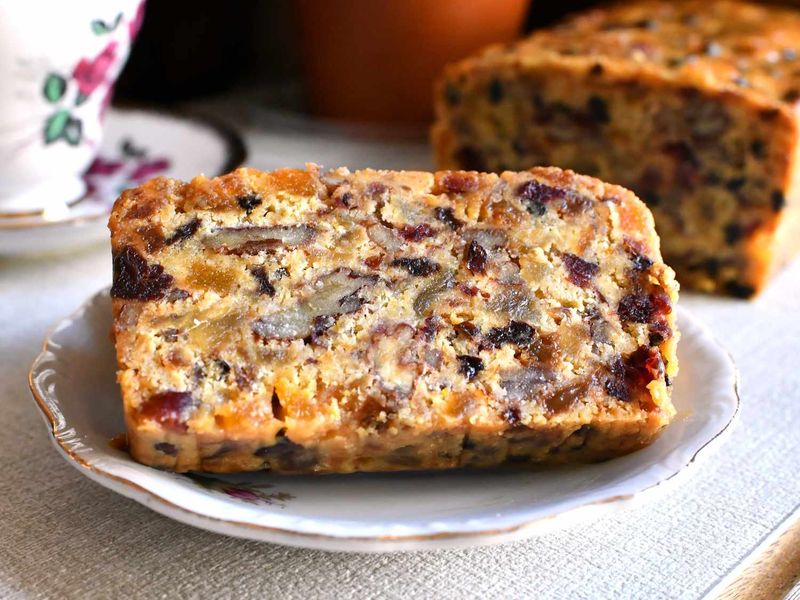
You might think of fruitcake as a festive tradition, but it’s often met with more gags than gasps of delight. This dense loaf is packed with overly sweet, neon-colored candied fruits that seem more suitable for a holiday light display than a dessert plate. For many, the rubbery texture and syrupy sweetness make it more of a festive doorstop than a treat to be savored.
The tradition of fruitcake dates back centuries, with some claiming its origin in ancient Rome, yet its modern version is anything but regal. Its reputation has taken such a hit that it’s become a punchline in holiday jokes.
Despite its detractors, some folks genuinely love fruitcake, cherishing the bold flavors and the nostalgia it brings. But for many, it remains a holiday enigma best admired from afar.
2. Gefilte Fish (Jewish Passover/Easter)

Picture this: cold, poached fish patties floating in a gelatinous broth. Gefilte fish is a staple of Jewish holiday tables, yet even seafood lovers often find it a textural challenge. The dish consists of ground fish mixed with onions, carrots, and seasonings, formed into patties and poached.
While some appreciate its delicate flavors and the comfort of tradition, others struggle with the combination of fishy aroma and jiggly consistency. Often served as an appetizer during Passover and Easter, it has a polarizing reputation.
For those who grew up with it, gefilte fish can evoke fond family memories and a sense of belonging. Yet, if you’re not accustomed to its unique presentation, it can be a daunting dish to approach. Its historical significance and cultural roots make it a fascinating conversation starter at any holiday meal.
3. Figgy Pudding
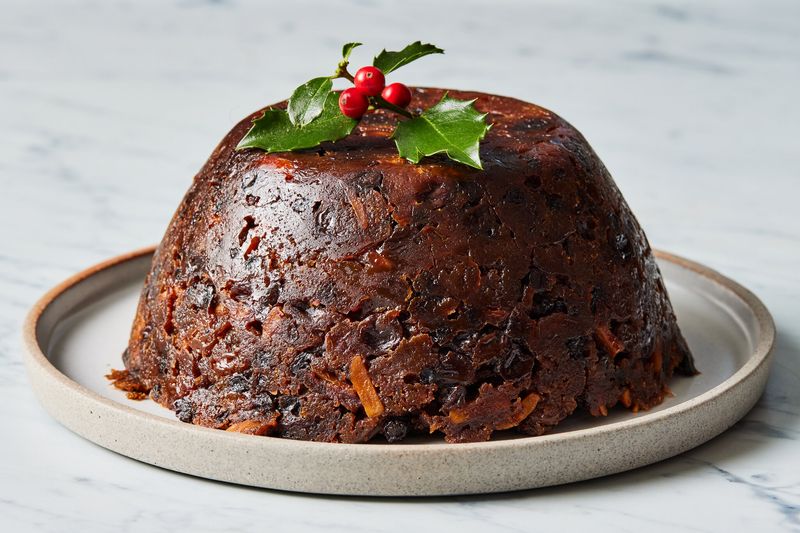
Mentioned in Christmas carols as a must-have, figgy pudding is more infamous than adored. This traditional British dessert combines boiled suet, dried fruits, and spices into a dense, sticky blob that doesn’t quite match its musical allure.
The pudding is steamed for hours, resulting in a moist, cake-like texture that can be either a delight or a disaster, depending on personal taste. Its rich flavors are often enhanced with brandy or rum, adding a boozy note to the holiday dessert table.
While it might not win a beauty contest, for some, figgy pudding is a nostalgic nod to Christmas past, bringing a warm, spicy sweetness that’s perfect for a cold winter night. However, for others, its heavy texture and peculiar ingredients can be an acquired taste, leaving it more sung about than sampled.
4. Ambrosia Salad
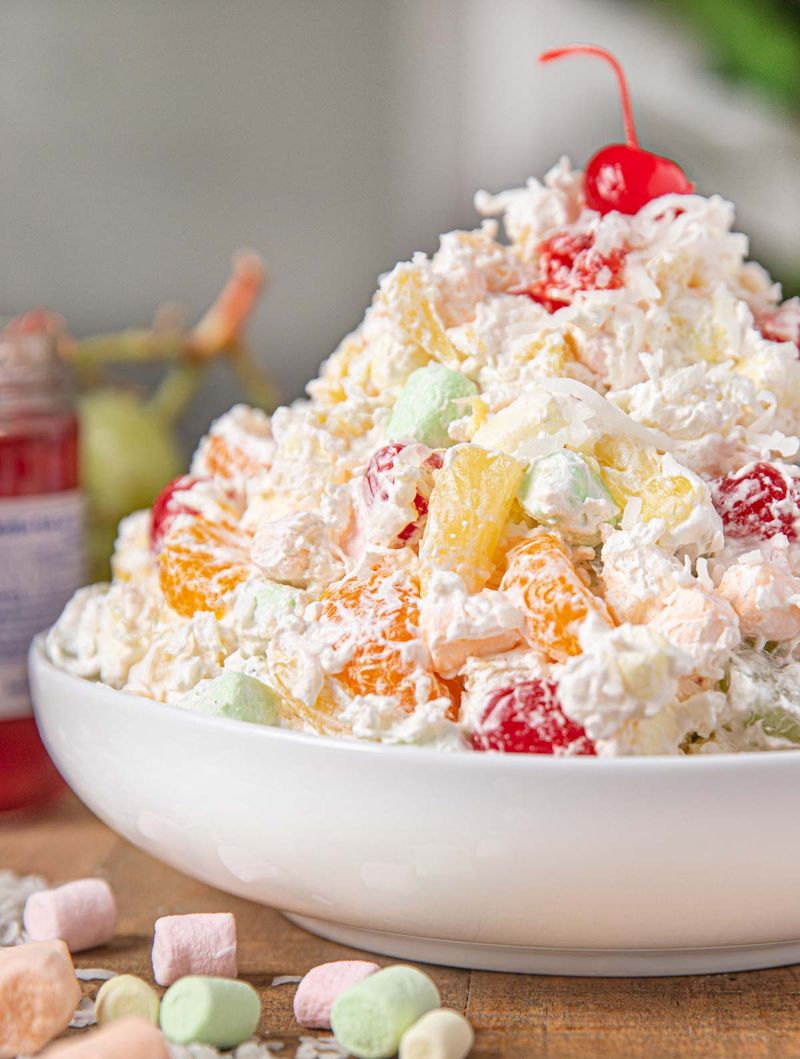
Ambrosia salad is less of a salad and more of a sweet mystery. This concoction of canned fruit, mini marshmallows, coconut, and mayonnaise or sour cream is a holiday staple in some American households. But for many, it’s an odd dish that defies categorization.
The combination of tangy, sweet, and creamy flavors can be an unexpected surprise, while the texture is often described as confusing and soggy. It’s a dish that either brings back fond childhood memories or leaves newcomers baffled.
Despite its unusual ingredients, ambrosia salad has a dedicated fan base, particularly in the South, where it’s often served at festive gatherings. Its origins trace back to the late 19th century, making it a nostalgic dish that’s survived the test of time, even if its appeal remains a mystery to some.
5. Jell-O Mold
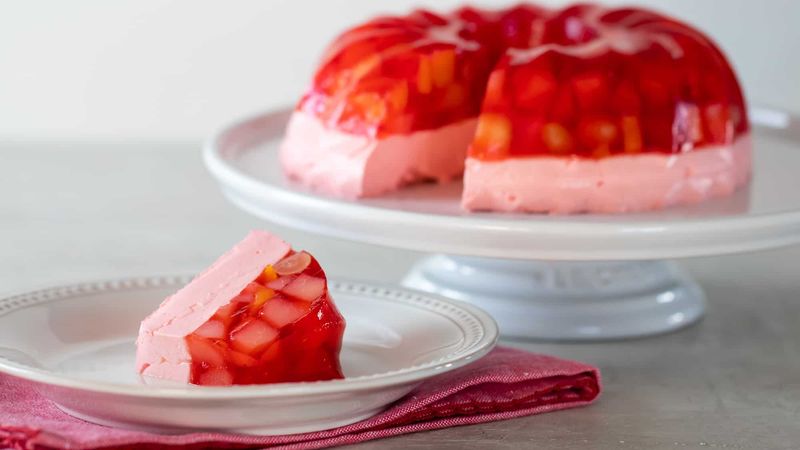
Ah, the Jell-O mold—a relic from the 1950s that still makes appearances at potlucks and holiday tables. This wobbly, neon-colored dish can trap anything from fruit to vegetables, and even meats, within its gelatinous embrace.
For some, the Jell-O mold is a quirky reminder of family gatherings, a testament to the culinary creativity of past generations. For others, it’s an unsettling concoction that challenges both taste and texture preferences.
The vibrant colors and playful shapes can be visually appealing, but the taste is often less thrilling. Whether you adore its retro charm or avoid it altogether, the Jell-O mold is a conversation starter and a nostalgic nod to mid-century cuisine that still finds its place in the holiday spread.
6. Haggis (Scottish Hogmanay)
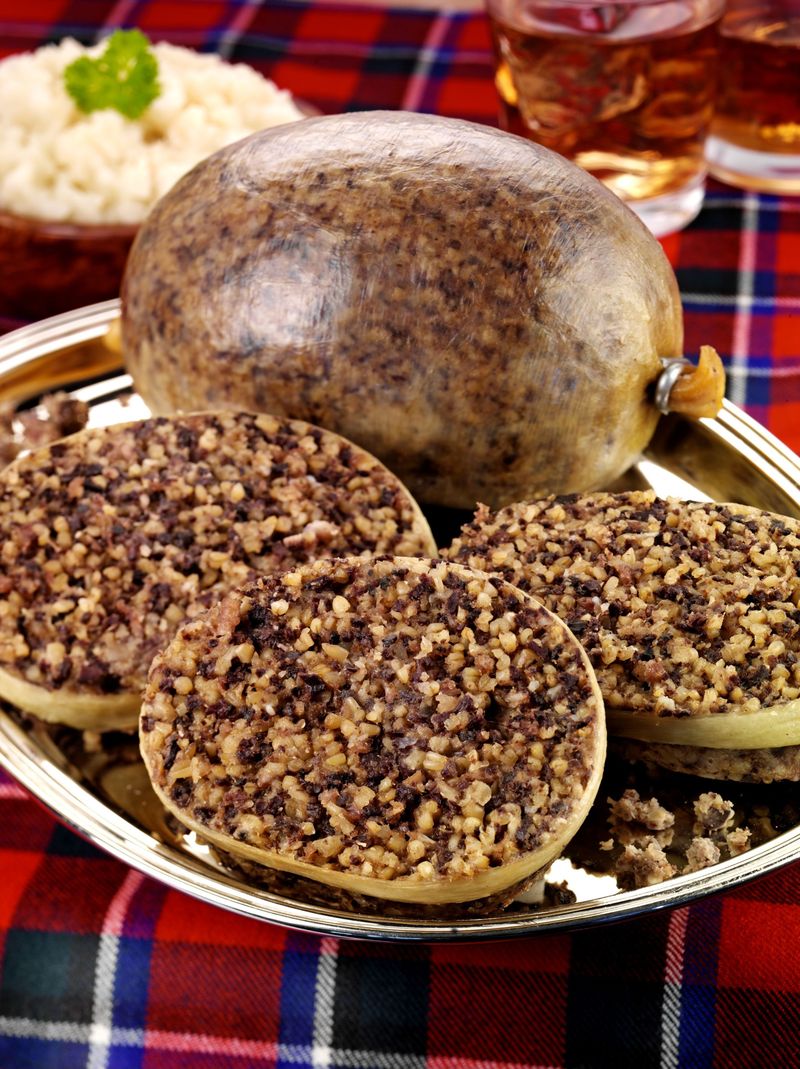
Haggis is the brave-hearted dish of Scotland, celebrated during Hogmanay but notorious worldwide for its unconventional ingredients. A sheep’s stomach serves as the cooking vessel, stuffed with minced organs, oats, and spices.
While reminiscent of a savory pudding, the concept of eating stuffed animal stomach might be off-putting to the uninitiated. Yet, those who dare often find it flavorful, rich, and surprisingly comforting.
The dish’s origins are practical, designed to use all parts of the animal, and it’s become a symbol of Scottish heritage. Haggis is often served with “neeps and tatties” (turnips and potatoes), and when paired with a good dram of whisky, it transforms into an experience rather than just a meal. Still, it’s a culinary adventure that isn’t for the faint-hearted!
7. Boiled Brussels Sprouts
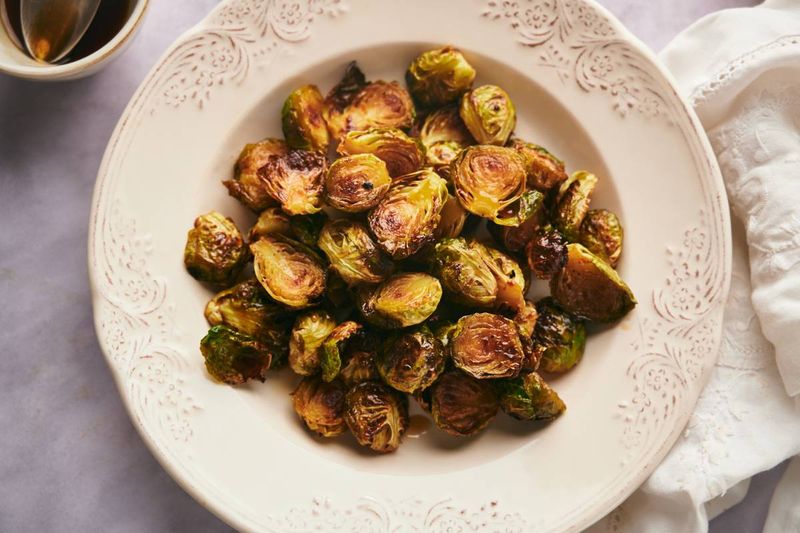
Brussels sprouts have a notorious reputation—especially when boiled into oblivion. Overcooking these tiny cabbages can result in a sulfurous smell reminiscent of a misguided chemistry experiment, deterring many from appreciating their potential.
However, the fault lies not with the sprouts but with the method. When done right, Brussels sprouts can be roasted or sautéed to bring out their natural sweetness and tender crispness.
Despite their polarizing nature, these veggies are packed with nutrients and have been gaining popularity with modern cooking techniques. But for those who’ve only known them as boiled mush, it might take a leap of faith to rediscover them in their more palatable forms. A little olive oil, garlic, and heat can turn this maligned dish into a delightful holiday side.
8. Lutefisk (Nordic Christmas)
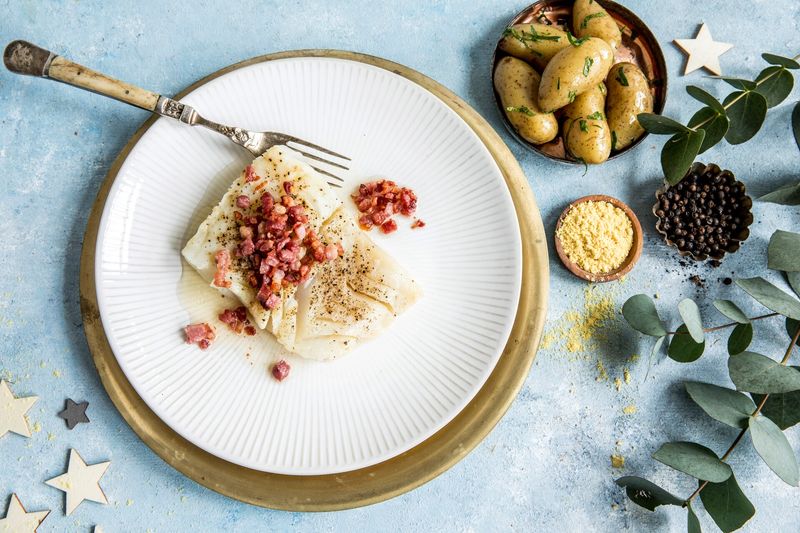
Lutefisk is a traditional Nordic dish that’s as unique as it is divisive. Made from whitefish soaked in lye—a chemical used for soapmaking—it undergoes a transformation into a gelatinous state before being rinsed and cooked.
This dish is a holiday staple in Scandinavian countries, often served with boiled potatoes and white sauce. Its texture is unusual, to say the least, and its preparation process can be off-putting for many.
Despite its unusual characteristics, lutefisk holds a cherished spot in Nordic heritage, celebrated for its deep-rooted traditions.
While some embrace its quirky charm, others might struggle with its slippery texture and strong aroma. Adventurous eaters might find themselves intrigued, but it’s undeniably a dish that requires an open mind—and palate.
9. Mincemeat Pie

Mincemeat pie is a holiday classic that confounds with its name. Originally filled with meat, suet, and fruits, modern versions lean towards a sweet-savory blend that can perplex new tasters.
The pie’s roots trace back to medieval times when spiced meat was preserved with fruits. Over centuries, it evolved, and today, the “meat” is more metaphorical, often replaced with a mix of apples, raisins, and spices.
While adored by some for its rich, festive flavors, others find the combination of ingredients unusual. Served during Christmas in many English-speaking countries, mincemeat pie continues to be a staple, sparking debate over its unique taste profile. Whether you savor or skip it, this pie remains a quintessential part of holiday traditions.
10. Christmas Pudding (UK)
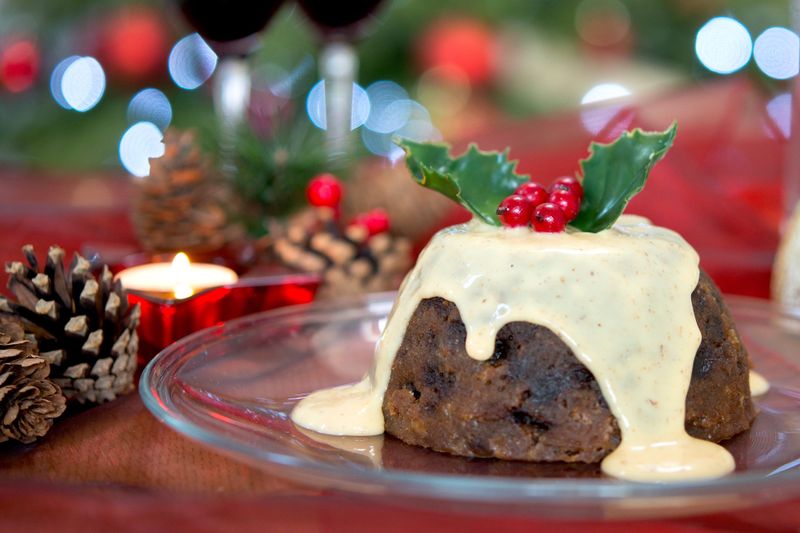
Imagine a dessert that has to age for months before it can be enjoyed. Christmas pudding, a British holiday classic, is a dense, sticky creation made with dried fruits and suet, often doused in alcohol.
This pudding is steamed for hours and traditionally set aflame before serving, a spectacle that adds to its festive allure. While some cherish its robust, boozy flavor, others find the dense texture a bit much.
Loved for its rich history and indulgent taste, Christmas pudding holds a nostalgic place in many hearts. However, its hefty ingredients and preparation process can be daunting. It’s a dessert that’s either a beloved tradition or an acquired taste, but its place in holiday celebrations is unquestioned.
Leave a comment